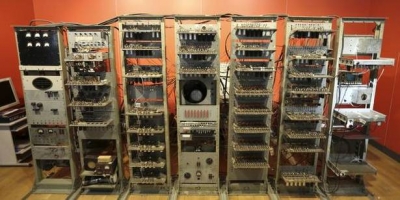
When you swipe across the apps on a smartphone, or stare at the computer screen while attending your classes during the ongoing pandemic, do you ever stop to marvel at their wonders? If we were to look back at the different generations of computing, we would encounter a number of devices. While all of these more or less did the same thing at different scales, they were surely bulkier as we move back in time. We wouldn’t be able to go any earlier than the Baby, however, for it was the world’s first stored-program electronic computer.
Baby or Manchester Baby was the nickname of the Small-Scale Experimental Machine (SSEM) that was built in Manchester, England in 1948. Englishmen Frederic Calland Williams, Tom Kilburn, and Geoff Tootill were the developers of Baby, a machine of critical importance in the evolution of computers.
ENIAC lacked memory
The Electronic Numerical Integrator and Computer, or ENIAC, was one of the earliest general-purpose computers that was introduced in 1946. While it was programmable, electronic and could solve a large class of problems through reprogramming, what it lacked was a program memory.
By this time, however, the recipe for computers that will soon change the world were almost in place. Hungarian-American John von Neumann articulated his ideas about a computer and described its architecture, consisting of a processing unit, memory and external input / output units. The von Neumann Architecture was at the heart of SSEM and continues to have its say in the internal workings of modern computers.
Radar to memory systems
Williams and Kilburn were top-class engineers with excellent working knowledge of the technology of the time. After having made exceptional contributions to the electronics of radar during World War II, the two men sought to switch to new fields after the war when the urgency of radar development reduced.
Aware that solving the problem of storage or memory systems would lead to a boom in computers worldwide, Williams turned his attention to the problem, hoping to apply his knowledge of cathode ray tubes to the storage of data. He was able to successfully demonstrate the operation of a single bit memory in October 1946.
In December that same year, Williams moved to the University of Manchester to take up a chair in Electro-Technics, now referred to as electrical engineering. Kilburn joined him soon enough and they worked together on their memory project. Joined later by Tootill, the trio successfully built a memory system by the end of 1947 that could operate and hold data.
Newman, Turin pitch in
The ultimate test, however, was building a computer around this memory system and testing its capability. While Williams and Kilburn knew all about electronics, they had to turn for support with respect to computers. Thankfully, they had the best in the business as their colleagues in the university, and they sought the help of mathematicians Max Newman and Alan Turing. Based on their advice, Williams designed the Baby, and it was built mainly by Kilburn and Tootill.
Almost the entire first half of 1948 was spent building the Baby. And then, on June 21, 1948, a program stored in an electronic memory was executed successfully for the first time anywhere in the world by Baby. A world of change was about to unfold.
Documentation of the program, which was written by Kilburn, has survived, including Tootill’s lab notebook. The actual code that Baby ran has been found and the popular consensus is that the first program was designed to find the highest proper factor of any given number.
While individual computers previously had been built to cater to specific problems, the Baby showed that one computer could do different jobs and solve a variety of problems. While this is something we all take for granted now, the idea was revolutionary in the 1940s, and it is this universality that makes Baby’s success a cornerstone in the evolution of computing.
Picture Credit : Google



